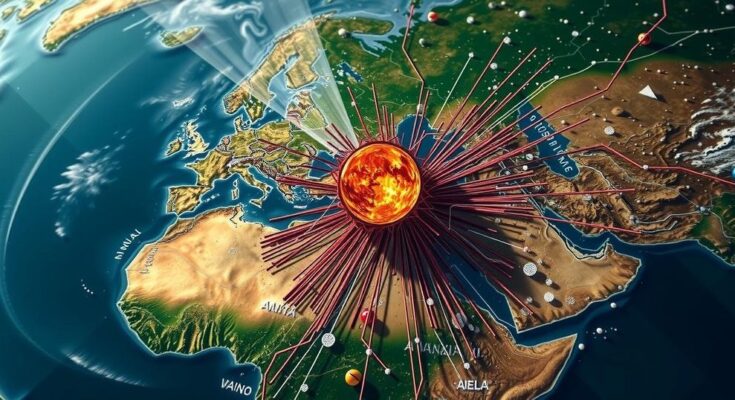A 6.8-magnitude earthquake struck near Bartolomé, Cuba, on November 11, with 117 reports of impact. This event follows a series of significant earthquakes in Chile, Peru, Greece, California, and Hawaii in November, revealing a concerning trend in seismic activity.
On November 11, a significant 6.8-magnitude earthquake was recorded near Bartolomé, Cuba, according to data released by the United States Geological Survey (USGS). The earthquake occurred at a depth of 14 kilometers (approximately 8.7 miles), and the USGS reported receiving 117 accounts from individuals who experienced the tremor. This seismic activity follows a sequence of notable earthquakes in the vicinity. Just two days earlier, on November 8, a 6.2-magnitude earthquake struck Cochrane, Chile. This particular earthquake was measured at a depth of 10 kilometers (roughly 6.2 miles). Prior to these events, on November 7, a 5.0-magnitude earthquake occurred in Changuillo, Peru, at a depth of 54.8 kilometers (around 34 miles). Furthermore, this sequence of quakes also included a 4.4-magnitude tremor reported in Borrego Springs, California, on the same day as the Peru earthquake, with a depth of 9.8 kilometers (approximately six miles). Earlier in the week, on November 5, Greece experienced a 4.4-magnitude earthquake centered in Chalandrítsa, reaching a depth of 82.3 kilometers (about 51.1 miles). Hours preceding this event, a 4.8-magnitude earthquake was also reported in Pāhala, Hawaii, at a depth of 38.4 kilometers (approximately 23.9 miles). Additionally, on November 4, California recorded a 3.3-magnitude earthquake originating in Anza, located at a depth of 12.1 kilometers (about 7.5 miles). The pattern of seismic activity across different regions raises awareness regarding potential geological instability in these areas.
Understanding seismic activity is crucial for assessing risks associated with earthquakes. The United States Geological Survey (USGS) surveys and reports on such natural events, providing essential data to comprehend the geographical and geological factors involved. The recent series of earthquakes that occurred across Cuba, Chile, Peru, Greece, California, and Hawaii highlights the importance of continuous monitoring and preparedness, as these events can have substantial impacts on local populations and infrastructure.
In summary, the recent occurrence of a 6.8-magnitude earthquake in Cuba is part of a broader sequence of seismic events affecting several countries around the world, including Chile, Peru, Greece, California, and Hawaii. This pattern underscores the ongoing risks associated with earthquakes and the significance of monitoring geological activity through reputable sources like the USGS.
Original Source: www.wiba.com




